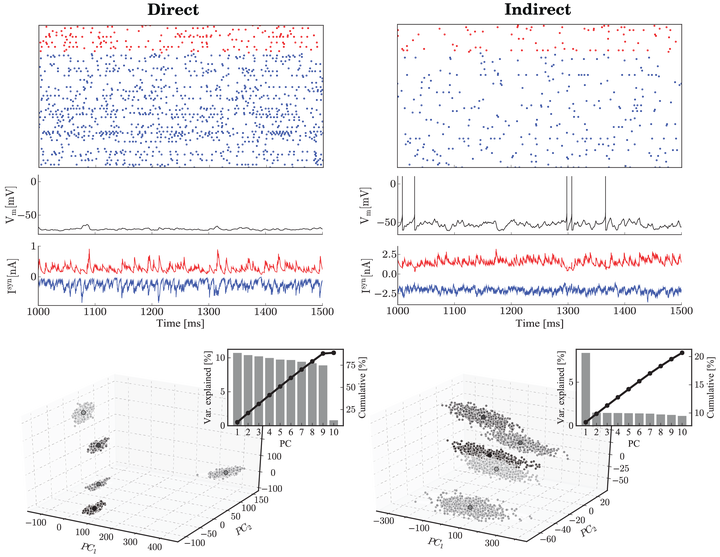Encoding symbolic sequences with spiking neural reservoirs
Proceedings of the International Joint Conference on Neural Networks 2018

Abstract
Biologically inspired spiking networks are an important tool to study the nature of computation and cognition in neural systems. In this work, we investigate the representational capacity of spiking networks engaged in an identity mapping task. We compare two schemes for encoding symbolic input, one in which input is injected as a direct current and one where input is delivered as a spatio-temporal spike pattern. We test the ability of networks to discriminate their input as a function of the number of distinct input symbols. We also compare performance using either membrane potentials or filtered spike trains as state variable. Furthermore, we investigate how the circuit behavior depends on the balance between excitation and inhibition, and the degree of synchrony and regularity in its internal dynamics. Finally, we compare different linear methods of decoding population activity onto desired target labels. Overall, our results suggest that even this simple mapping task is strongly influenced by design choices on input encoding, state-variables, circuit characteristics and decoding methods, and these factors can interact in complex ways. This work highlights the importance of constraining computational network models of behavior by available neurobiological evidence.